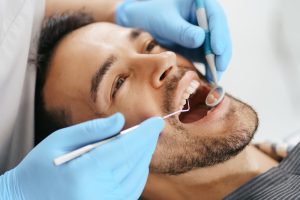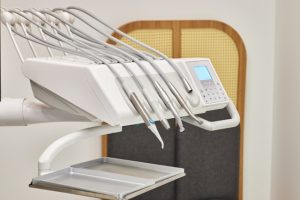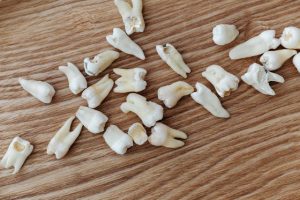Dental emergencies can happen in the blink of an eye. One of the most alarming is a tooth avulsion, when a tooth is knock out of its socket. An avulsed tooth is treat as a dental emergency for children and young adults. Knowing exactly what to do in those first critical moments can mean the difference between saving and losing your tooth.
This guide will explore everything you need to know about an avulsed tooth, including immediate first aid, reimplantation steps, treatment options, and frequently asked questions.
What is an Avulsed Tooth?
An avulsed tooth refers to a tooth that has been completely dislodge from its socket due to trauma or injury. This is more than just a chipped or broken tooth—the entire tooth, including the root, is expelled from the mouth, leaving an empty socket behind.
Tooth avulsion is a true dental emergency and requires quick action to maximize the chances of saving the tooth. Knowing a bit about tooth anatomy helps to understand tooth avulsion. A tooth consists of two main parts:
- Crown: The visible part above the gum line.
- Root: The portion anchored below the gum is typically twice as long as the crown.
When a tooth is avulsed, the crown and the root are separate from the supporting bone and tissues. This injury is most common in children age 7 to 11, often affecting the upper front teeth, but it can happen to anyone at any age.
What Happens When a Tooth is Avulsed?
When a tooth avulsion occurs, the supporting fibers (periodontal ligament) and blood vessels are torn, causing immediate bleeding and pain. The expose socket is left vulnerable to infection and further trauma.
If not handled properly, it can quickly lose its viability for reimplantation due to dehydration and damage to the root surface. The prognosis for an avulsed tooth depends on:
- Time is Critical: Reimplantation within 30 minutes offers the best outcome.
- Proper Storage: If immediate reimplantation isn’t possible, keeping the tooth moist in milk, saline, or inside the cheek can help preserve it.
- Careful Handling: Always hold the tooth by the crown—never touch or scrub the root.
Delaying care can lead to pulp death and root resorption, making it harder to save the tooth later.
How to Reimplant an Avulsed Tooth?

Immediate action is essential when dealing with a tooth avulsion. Here’s a step-by-step guide on what to do if you or someone else suffers an avulsed tooth:
- Locate the Tooth: Find the tooth and pick it up by the crown (the chewing surface), not the root.
- Rinse Gently: If the tooth is dirty, rinse it gently with milk or saline solution. Do not scrub, scrape, or use soap—this can damage the root surface.
- Reimplant If Possible: If the person is conscious and alert, try to gently reinsert the tooth into its socket, using the neighboring teeth as a guide for orientation. Apply gentle pressure to the seat of the tooth.
- Stabilize the Tooth: Have the person bite down on a clean piece of gauze or cloth to help keep the tooth in place while heading to the dentist.
- If Reimplantation Isn’t Possible: Store the tooth in a suitable medium:
- Milk (preferred)
- Saline solution
- Inside the cheek (only if the person is old enough not to swallow it)
- Special storage solutions like Hank’s Balanced Salt Solution (if available)
6. Seek Immediate Dental Care: Time is critical. Head to a dentist or emergency dental office as quickly as possible.
Important: Never let the tooth dry out. Also, avoid storing it in water or wrapping it in tissue or cloth, as this can damage the root cells and make reimplantation impossible.
How to Treat an Avulsed Tooth?
Once you arrive at the dental office, the dentist will examine the situation and proceed with the following steps:
- Assessment: The dentist will assess the socket and the avulsed tooth, possibly using X-rays to check for additional injuries.
- Cleaning: The socket may be gently irrigated with saline to remove debris and blood clots.
- Reimplantation: If not already done, the dentist will reinsert the tooth into the socket, ensuring proper orientation and fit.
- Stabilization: To allow healing, the tooth will be splinted to the adjacent teeth using flexible material for 1-2 weeks.
- Medications: Antibiotics may be given to prevent infection. A tetanus shot may be need if the injury was contaminate.
- Root Canal Treatment: Most avulsed permanent teeth will require root canal therapy within a week or two after reimplantation to prevent infection and root resorption.
- Follow-up: Regular checkups are essential to monitor healing and detect complications like root resorption or ankylosis.
If reimplantation is not possible (for example, if the tooth was out of the mouth too long or is severely damage), the dentist will discuss alternatives for tooth replacement, such as dental implants, bridges, or partial dentures.
For ongoing care and emergencies, it’s wise to have the contact information for trusted dental offices in Blaine, MN, on hand.

Final Thoughts
A tooth avulsion is a dental emergency that requires immediate action. If you or someone close to you faces the unfortunate event of an avulsed tooth, it’s essential to act quickly—ideally within the first 30 minutes.
When handling the tooth, be gentle and hold it by the crown, avoiding contact with the root. Every moment counts, so don’t hesitate to seek help!
If you are living in Blaine and facing any type of dental emergency, seek professional help from a dentist in blaine mn, at our dental office, University Ave Dental.
Following these steps gives you the best chance to save your avulsed tooth and maintain your smile for years. For ongoing dental care and emergencies, if you’re looking for dental offices in blaine mn, contact us for expert help. Book an appointment online or call 763.784.1242
Our Address: 10155 University Ave NE Suite #112, Blaine, MN 55434, United States



